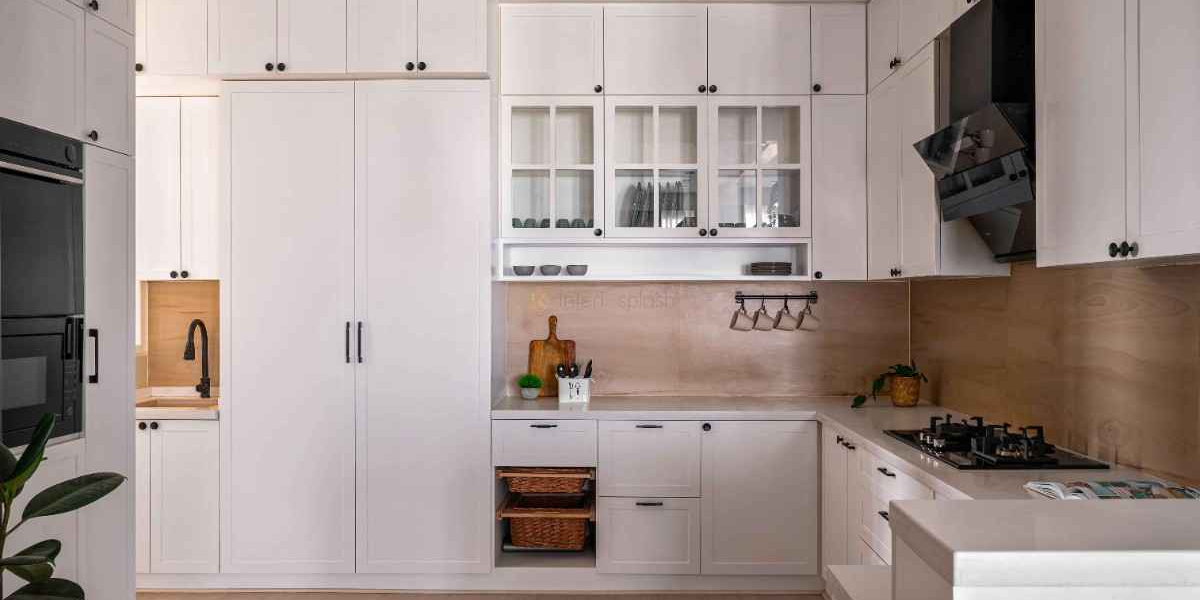Introduction
As homeowners continue to downsize or choose smaller, more sustainable living spaces, the need to maximize the perception of space has never been more crucial. Interior designers in Bangalore are skilled at transforming even the smallest rooms into open, airy havens. With a combination of strategic design choices and clever use of decor, you can make any room feel significantly larger than it is. Whether you are an interior designer or simply seeking expert advice, this guide provides practical solutions to open up your small space.
In this article, we will explore the top design tricks used by interior designers to create the illusion of space, helping you achieve a spacious atmosphere in small rooms. We’ll dive into everything from the right furniture choices to smart lighting, all while keeping your aesthetic goals in mind.
Table of Contents
- Use of Light Colors and Natural Light
- Strategic Furniture Arrangement
- Decluttering and Minimalism
- Use of Mirrors for Reflection
- Vertical Space Utilization
- Multifunctional Furniture
- Smart Flooring Choices
- Conclusion
1. Use of Light Colors and Natural Light
The power of color and light cannot be underestimated when it comes to making a small room feel bigger. Interior designers often prioritize these two factors when optimizing limited spaces.
- Choose light and neutral colors: Lighter shades reflect light better, making a room feel airy and open. White, soft grays, and pale blues are popular choices for expanding the perceived space.
- Maximize natural light: Let as much natural light into the room as possible. Unobstructed windows can flood the room with light, making it feel brighter and larger. Consider sheer curtains instead of heavy drapes to enhance the flow of light.
- Avoid dark colors: Dark tones absorb light, making a room feel more enclosed. While darker accents can add depth, they should be used sparingly.
2. Strategic Furniture Arrangement
How you arrange your furniture can significantly impact the sense of space in a small room. Interior design companies in Bangalore often advise the following:
- Opt for furniture with exposed legs: Pieces that are raised off the floor create a sense of airiness and openness.
- Avoid bulky furniture: Oversized furniture can overwhelm a small space. Choose compact, streamlined pieces that fit the scale of the room.
- Float the furniture: Instead of pushing furniture against the walls, try placing pieces slightly away from the walls. This creates an illusion of depth and gives the room a more open feel.
- Consider built-ins: Interior designers suggest utilizing built-in shelves or seating to save space and reduce clutter.
3. Decluttering and Minimalism
A cluttered room can quickly feel cramped and overwhelming. Interior designers always emphasize the importance of decluttering for a spacious environment.
- Embrace minimalism: Less is more when it comes to small spaces. Stick to essential furniture pieces and decor to prevent the room from feeling crowded.
- Organize storage: Use hidden storage solutions like ottomans, benches, or under-bed storage to keep belongings out of sight.
- Limit decorative items: Avoid overloading the room with too many knick-knacks. Select a few statement pieces that align with the room's design to maintain simplicity and openness.
4. Use of Mirrors for Reflection
Mirrors are one of the most effective tools in an interior designer’s arsenal to create the illusion of space.
- Place mirrors strategically: Position mirrors opposite windows to reflect natural light and brighten the room.
- Use large mirrors: Bigger mirrors create more reflection and can double the perception of space. Consider using a floor-to-ceiling mirror or a large wall mirror as a focal point.
- Mirror-backed furniture: Some interior designers use mirrored furniture pieces like coffee tables or cabinets to reflect light and make the room feel less confined.
5. Vertical Space Utilization
While horizontal space might be limited in a small room, you can take advantage of vertical space to make the room feel bigger.
- Install tall shelves: Tall, narrow bookshelves or wall-mounted shelves draw the eye upward, creating a sense of height and openness.
- Hang long curtains: Opt for curtains that extend from the ceiling to the floor to elongate the room visually.
- Vertical wall art: Instead of horizontal art arrangements, consider hanging artwork vertically to emphasize the room's height.
6. Multifunctional Furniture
In smaller spaces, furniture that serves multiple purposes can maximize both utility and space.
- Use foldable or expandable furniture: Items like foldable tables, expandable dining sets, and stackable chairs allow for more flexibility in how the space is used.
- Choose furniture with storage: Ottomans, sofas, or beds with built-in storage compartments reduce the need for additional furniture, freeing up floor space.
- Invest in convertible furniture: Sofa beds, convertible desks, or murphy beds are perfect for small rooms, as they offer more functionality without sacrificing space.
7. Smart Flooring Choices
Your choice of flooring can also influence how large or small a room feels.
- Use light flooring: Just like walls, lighter floors can make a space feel larger. Pale woods, light tiles, or even light-colored rugs help enhance the perception of space.
- Go for large-scale patterns: Interior designers often recommend larger tiles or planks rather than smaller ones. Larger patterns create a more expansive look, especially in a small room.
- Lay flooring diagonally: This trick gives the illusion of a room being longer or wider than it actually is.
Conclusion
Making a small room feel bigger is not just about the size of the space but how you design and utilize it. By adopting smart interior design principles—such as using light colors, strategic furniture placement, and multifunctional pieces—you can transform even the most compact space into an open and inviting room. Whether you're an interior design company in Bangalore or a homeowner looking to refresh your small space, these expert tips will help create the illusion of spaciousness and elevate your interior design game.
For professional guidance, always consider consulting an interior designer who can tailor these strategies to your specific space, ensuring the best results.
By applying these expert tips, you'll soon discover that size doesn't have to limit your creativity or comfort. Transform your small room into a spacious sanctuary with ease and style!









